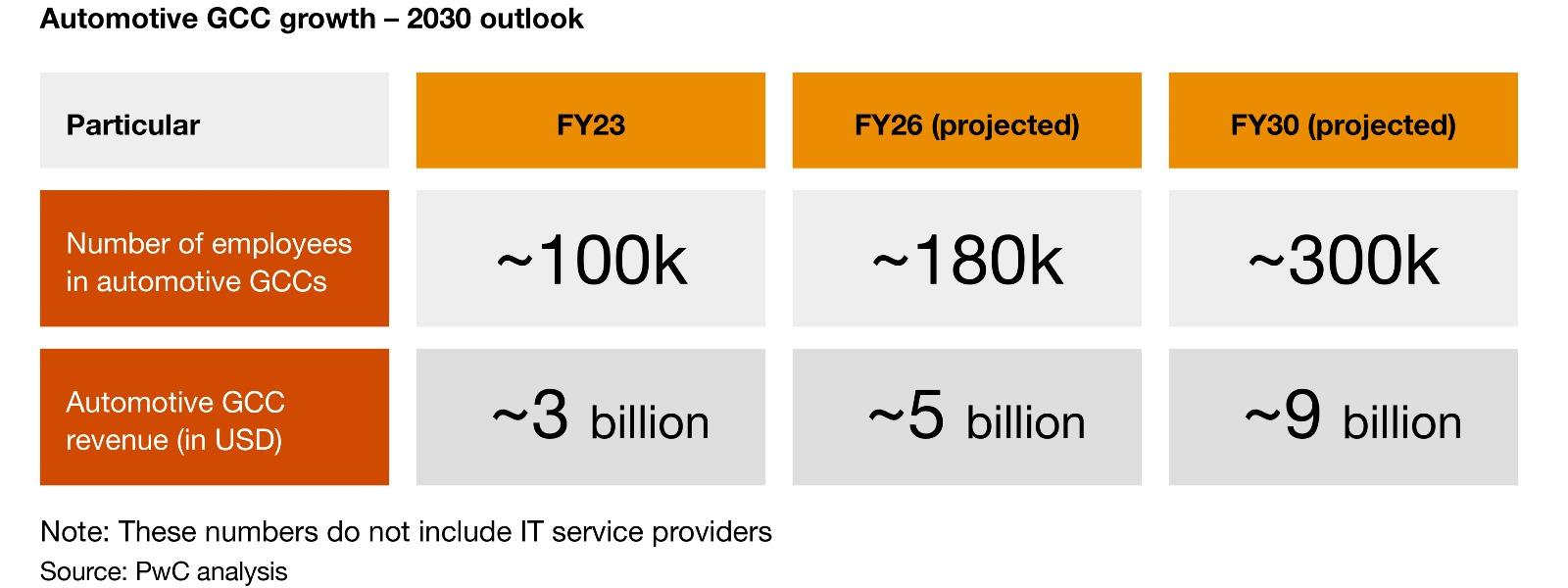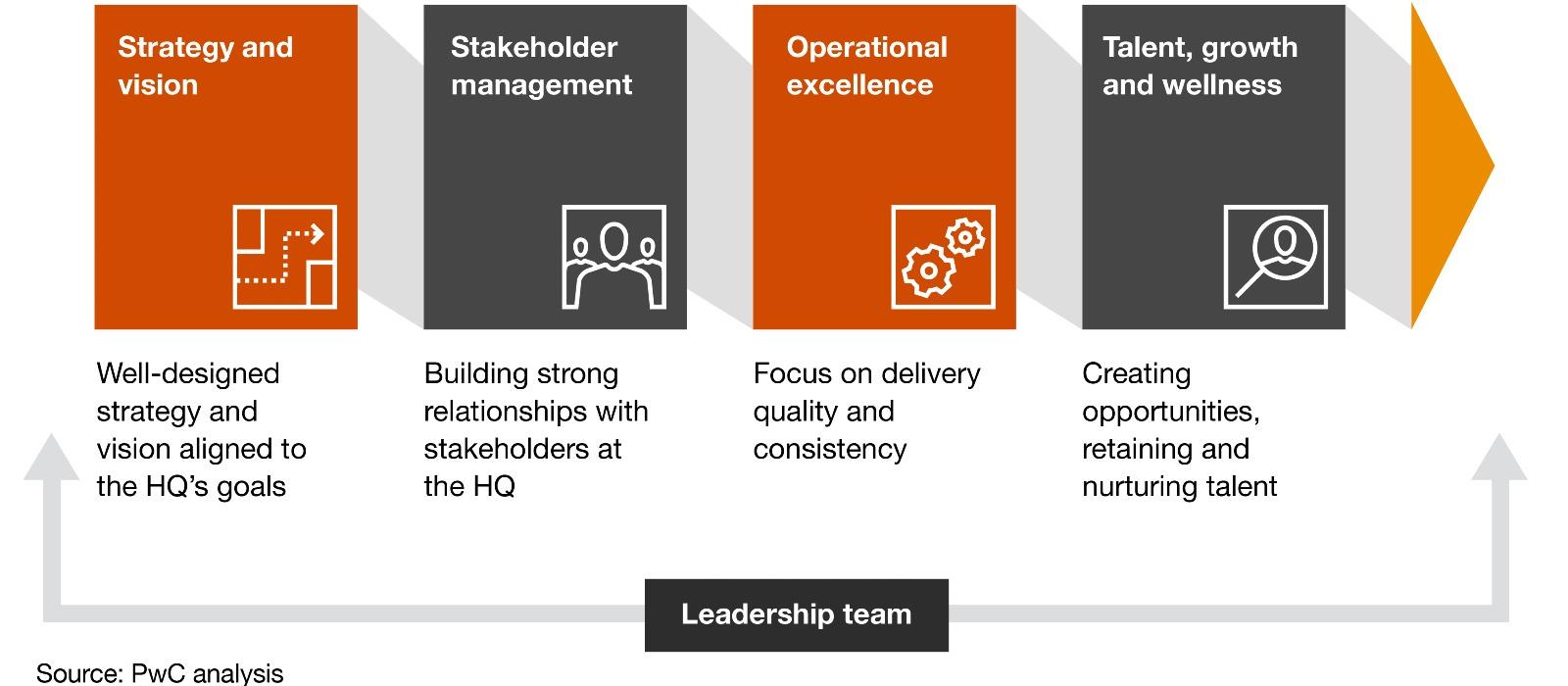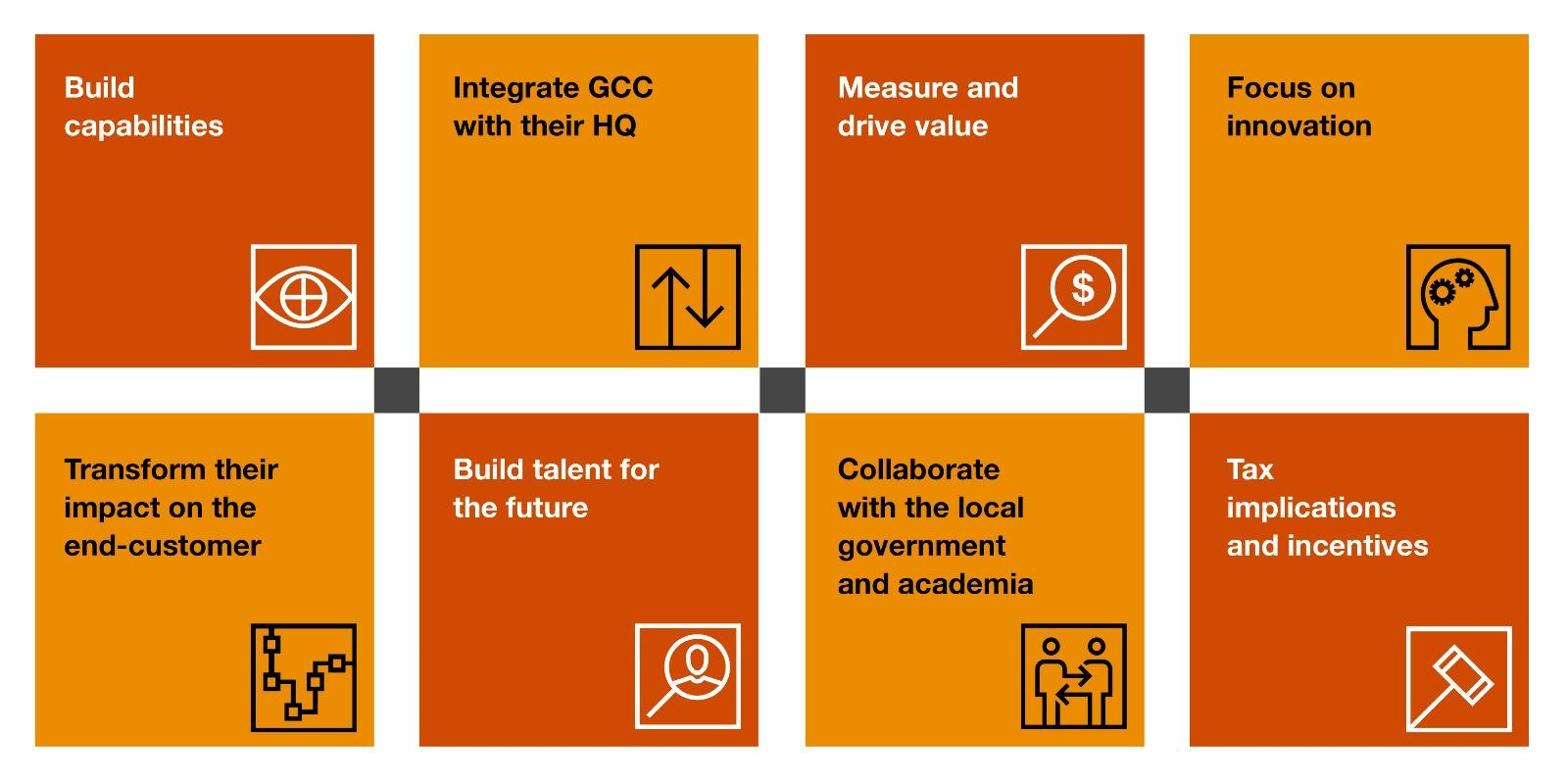Click here to download the report
The global automotive industry is transforming rapidly and witnessing a sea change with emerging trends such as electric vehicles, autonomous driving, connected car technology, safety, sustainability and innovative customer ownership models.
To navigate these changes, adapt to market demands and sustain profitability, automakers and their suppliers are increasingly investing in innovation, research and development, and product development through establishing Global Capability Centres (GCCs).
Initially established as cost-arbitrage entities for their HQs, Indian automotive GCCs are now playing a pivotal role in driving innovation, expanding their roles to include a full-spectrum of capabilities and offer end-to-end solutions. The evolution of GCCs from cost arbitrage to value arbitrage centres signifies India’s growing prominence as a strategic partner to global automotive players.
The road ahead for Indian automotive GCCs is both promising and demanding. It is time to embrace this opportunity, actively contribute to innovation and make the most of the emerging advancements in the industry.
Growth forecast
The following drivers will fuel this growth:
- Automotive GCCs which are established in India, have won the trust of their global stakeholders. There is a greater willingness to collaborate and an increased transfer of marquee work to India which enhances the role Indian GCCs have to play in the HQ’s operations. This has also resulted in an increase in the number of GCCs in India.

- Innovations in the automotive industry is driving organisations to have faster development cycles and continuous engineering support from the GCCS due to which the HQs are investing more in Indian GCCs.
- New virtual collaborative technological tools like VR and digital twins are enabling easier and faster collaboration between Indian GCCs and their global counterparts.
India advantage in the automotive GCC industry
- India is rapidly emerging as a hub for automotive GCCs as HQs are leveraging its vast and dynamic talent pool, advanced technological capabilities, strategic locations and the supportive ecosystem for innovation and growth.
Indian automotive GCCs have enhanced their global competitiveness by developing their capabilities in the following areas:
Digitalisation and tech design
Digitalisation is at the core of automotive GCCs in India as they develop cutting-edge technologies to transform product design processes, enhance cybersecurity, implement blockchain solutions, leverage advanced analytics and improve manufacturing, maintenance, operations, and sales and marketing.
For example, many automotive manufacturers are developing mobile applications integrated with the vehicle electronics and infotainment systems.
AI and ML
Automotive GCCs in India are harnessing AI/ML to enhance in-vehicle customer experience through voice or gesture activated commands and controls.
OEM GCCs are developing or in-vehicle application for their EVs, to optimise navigation routes and reduce range anxiety.
Product design and development
Automotive GCCs in India are developing end-to-end processes, technologies and products for global use taking responsibility for the entire product lifecycle right from conceptualisation to end-of-life management. Certain auto-component GCCs are developing end-to-end passive safety systems in India.
Embedded systems
Indian automotive GCCs specialise in the development of vehicle technologies like active and passive safety systems, software-defined vehicles, autonomous vehicles, sensors, connected cars, and e-powertrain management, leverage the power of the IoT to seamlessly incorporate hardware components.
For example, auto-component GCCs are developing sensory ecosystems to detect low speed impacts, vandalism, road conditions, driver voice identification.
Challenges
Though there is a rise in the number of automotive GCCs in India, they are encountering a range of challenges such as maintaining synergy with headquarters, nurturing and retaining talent, and adapting to shifts in the operations.
To strengthen their position as contributors and not as a support functions, Indian automotive GCCs need to work towards mitigating these challenges by devising remedial strategies in collaboration with the HQs, and local academic institutions and the government.

Leading Practices
As automotive GCCs in India seek ways to enhance their role in the global market and gain autonomy for their operations, their focus should be on establishing a vision which focuses on quality deliveries, forging relationships with the key stakeholders an becoming a valuable contributor for their HQs. Below are the key leading practices GCCs can focus on:

Role of leadership
The success of an automotive GCC hinges on the leadership’s ability to forge a robust bond with the HQ by communicating their vision for the GCC and setting up the path for success. Leadership plays an integral role at each step of the operations and can enhance the role of the GCCs within the HQ and the greater GCC ecosystem. High output with low supervision helps the GCCs in earning the trust of their HQs and cement their role as a vital contributor to the HQ’s operations. This trust can then help the GCCs in securing flagship projects, attract better investments and help them in retaining talent.
Way forward for Automotive GCCs
Automotive GCCs are expanding their presence and the next decade will witness the scaling up of these GCCs in India. However, in order to grow successfully, it is imperative for the GCCs to build the right capabilities and reorient their value proposition by considering the following points:


The next decade is expected to see a multifold growth in output and employment for India’s Automotive GCCs. These organisations are fast moving towards becoming centers of excellence and innovation for the Global Automotive industry.
Kavan Mukhtyar
Partner and Leader – Automotive, PwC India
The road ahead
Disruption in the automotive industry has made it difficult for automotive organisations to adapt to the changes in the industry. The rapid transformation demands more investments, enhanced R&D and accelerated digitalisation. Indian GCCs can be a strategic asset for automotive organisations. Though Indian automotive GCCs have seen a significant growth in the last two decades, they are now focusing on delivering high value to their HQs and achieving improved product development at optimised costs without compromising on quality and profitability. As more and more automotive organisations look at setting up and scaling their GCCs in India, they must adopt the right strategies and be mindful of the implications of setting up their operations in India. GCCs in India must also collaborate with their global stakeholders to improve their business in India and enhance their role as valuable contributors in the automotive industry. Indian automotive GCCs are becoming reliable partners for their HQs to navigate the rapid digitalisation and emerging industry trends. It is time for both the HQs and the GCCs to leverage India’s strengths and build a platform for developing and delivering complex, high-value automotive solutions and make the industry futureready. The road ahead is full of opportunities and challenges and it is up to the Indian automotive GCCs and their HQs to devise a strategy which benefits them equally.
Conclusion
The rapid transformation in the automotive industry has led to an increase in the demand for round-the-clock engineering, R&D and support services. Indian GCCs can be a strategic asset to meet these requirements for global automotive organisations to deliver high value to their HQs at optimised costs without compromising on quality and profitability.
As automotive organisations look at setting up and expanding their GCC operations in India, they must consider the following levers:
- Set a clear vision and strategy for growth based on the emerging technologies and the services which Indian GCCs can offer.
- Deploy the right operational enablers (e.g. organisational structure, governance mechanism, infrastructure, digital tools) to ensure coordination with the HQ and other global centres.
- Ensure that the GCC’s roadmap for talent acquisition, development and retention is well-defined to meet the expectations of the HQ.
- Identify ways to enhance workforce productivity through global exposure, challenging projects and partnerships and align the value metrices and KPIs to the HQ’s goals.
- Ensure enhanced regulatory compliance by setting up strong internal processes, governance structures and risk mitigation mechanisms.
The road ahead is full of opportunities, and it is up to the Indian automotive GCCs and their HQs to devise a strategy which can benefit them equally, foster collaboration and build the trust in their capabilities.
Contact us
















